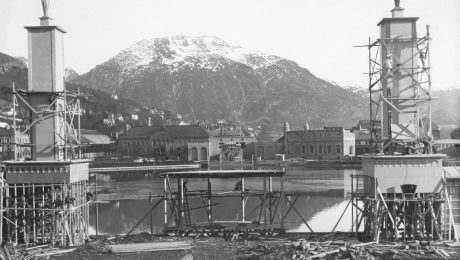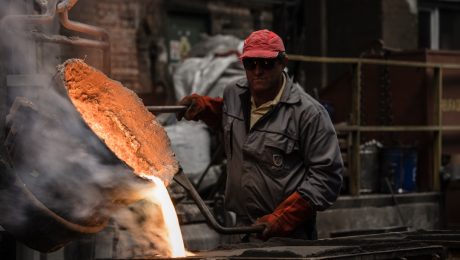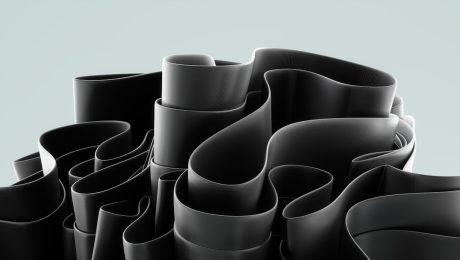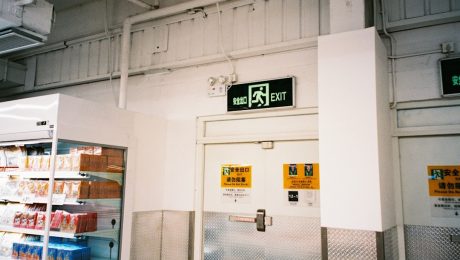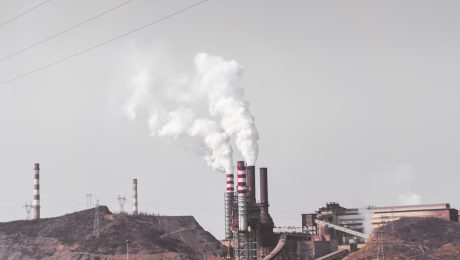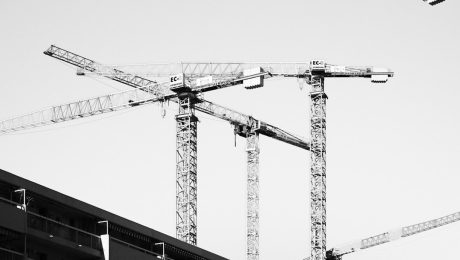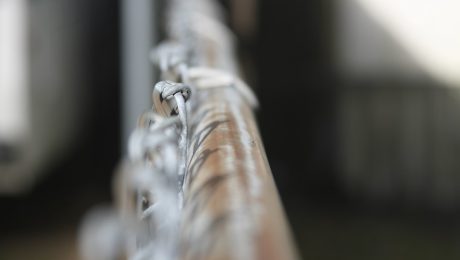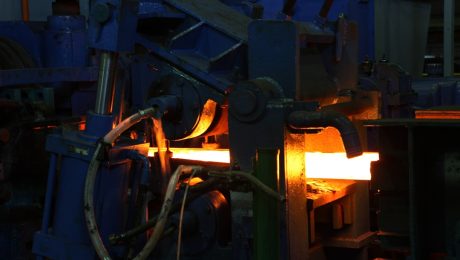The construction of modern ports is a complex undertaking, demanding innovative and robust solutions to withstand the harsh marine environment. Steel pipes, with their inherent strength, versatility, and cost-effectiveness, are increasingly becoming a preferred material for various port construction applications. This post delves into the crucial role of steel pipes in modern port infrastructure development.
1. Design and Engineering Considerations for Steel Pipe Port Structures
Designing a port structure using steel pipes requires careful consideration of several factors. The diameter and wall thickness of the pipes are crucial, determined by the anticipated loads, soil conditions, and water depth. Finite element analysis (FEA) is often employed to simulate the structural behavior under various loading scenarios, including wave forces, seismic activity, and vessel impact. The design also needs to account for corrosion protection, typically through the application of protective coatings or galvanization. Furthermore, the connection methods between pipes, whether through welding, bolted flanges, or specialized connectors, are critical for ensuring structural integrity. Detailed drawings and specifications are essential for fabrication and on-site assembly. The selection of appropriate steel grade is also vital, considering factors like yield strength, ductility, and weldability. Careful consideration of fatigue life under cyclic loading is also essential for long-term performance and safety.
2. Advantages of Utilizing Steel Pipes in Port Construction
Steel pipes offer numerous advantages in port construction. Their high strength-to-weight ratio allows for the construction of lighter yet robust structures, reducing material costs and transportation needs. The circular cross-section provides excellent resistance to lateral loads, making them ideal for applications such as piles and caissons. Steel pipes are also relatively easy to fabricate and transport, simplifying the construction process. Their inherent ductility allows them to absorb significant energy during seismic events, enhancing the overall structural resilience. Moreover, steel pipes can be readily adapted to various construction techniques, including driving, jacking, and vibratory installation, offering flexibility in site conditions. The readily available and well-established welding techniques ensure robust and reliable connections between pipe sections.
3. Addressing the Challenges of Steel Pipe Port Construction
While offering significant advantages, steel pipe port construction also presents certain challenges. Corrosion is a major concern, requiring careful selection of materials, protective coatings, and regular maintenance. The potential for buckling under compressive loads needs to be meticulously addressed through appropriate design and support systems. Welding quality control is crucial to ensure the structural integrity of the connections. Logistics and transportation of large-diameter pipes can be complex and expensive, especially in remote locations. Site conditions, such as soil type and water depth, can significantly influence the construction methodology and cost. Moreover, ensuring the precise alignment and verticality of the pipes during installation requires skilled labor and sophisticated equipment.
4. Environmental Considerations in Steel Pipe Port Construction
Environmental sustainability is increasingly crucial in port development. Steel is a recyclable material, reducing the environmental impact compared to other construction materials. However, the manufacturing process of steel does generate greenhouse gases. Minimizing waste during fabrication and construction is essential. Careful consideration needs to be given to the potential impact on marine ecosystems during construction, including noise pollution and sediment disturbance. The selection of environmentally friendly protective coatings is also important. Life cycle assessment (LCA) can be utilized to evaluate the overall environmental impact of steel pipe port structures throughout their lifespan. The potential for future decommissioning and recycling needs to be planned from the initial design phase.
5. Future Trends and Innovations in Steel Pipe Port Construction
The future of steel pipe port construction involves further innovations to enhance efficiency, sustainability, and resilience. Advanced materials, such as high-strength low-alloy (HSLA) steels, are being explored to reduce weight and enhance performance. The integration of smart sensors and monitoring systems allows for real-time assessment of structural health and early detection of potential problems. Additive manufacturing techniques, such as 3D printing, offer the potential for customized and optimized pipe designs. The development of more environmentally friendly coatings and corrosion protection methods is ongoing. Further research into the use of recycled steel in port construction is also crucial for achieving greater sustainability. The integration of renewable energy sources into port infrastructure, powered by structures built with steel pipes, is also emerging as a promising trend.
In conclusion, steel pipes are playing a vital role in shaping the future of port construction. Their versatility, strength, and cost-effectiveness, combined with ongoing innovations, solidify their position as a key material for building resilient and sustainable port infrastructure worldwide. Proper planning, meticulous design, and careful consideration of environmental factors are essential for successful implementation.
SEO Tags:
- Steel pipe ports
- Port construction techniques
- Marine steel structures
- Offshore port construction
- Sustainable port development
body { font-family: sans-serif; line-height: 1.6; }
h1, h2, h3 { color: #333; }
h1 { font-size: 2.5em; }
h2 { font-size: 2em; }
h3 { font-size: 1.5em; }
The steel industry is a cornerstone of modern infrastructure and manufacturing. Ensuring the quality and reliability of steel products is paramount, and this is where ASTM International standards come into play. ASTM (formerly known as the American Society for Testing and Materials) develops and publishes internationally recognized standards for materials, products, systems, and services. Compliance with these standards is crucial for steel producers to guarantee the integrity and performance of their products, meet customer expectations, and maintain a competitive edge. This post delves into the critical aspects of ASTM compliance in steel production.
Understanding ASTM Standards for Steel
ASTM offers a vast array of standards specifically designed for steel, covering various grades, properties, and testing methods. These standards detail the chemical composition, mechanical properties (tensile strength, yield strength, elongation, hardness), and dimensional tolerances of different steel types. For instance, ASTM A36 specifies the requirements for structural steel, while ASTM A572 covers high-strength low-alloy structural steel. These standards aren’t just guidelines; they are precise specifications that manufacturers must adhere to. Understanding the specific ASTM standard relevant to a particular steel grade is the first step towards compliance.
Navigating the extensive library of ASTM standards can be challenging. Steel producers often rely on internal experts and external consultants to ensure they are using the correct and most up-to-date versions of the relevant standards. Regular updates and revisions to these standards necessitate ongoing training and awareness within the organization.
The Crucial Role of Testing and Quality Control
ASTM compliance isn’t just about following specifications on paper; it demands rigorous testing and quality control at every stage of the steel production process. From raw material inspection to finished product verification, comprehensive testing is essential. This includes chemical analysis to verify the composition, mechanical testing to assess strength and ductility, and non-destructive testing (NDT) methods such as ultrasonic testing and magnetic particle inspection to detect internal flaws.
The frequency and types of tests conducted depend on the specific steel grade and the intended application. Maintaining detailed records of all testing procedures and results is crucial for demonstrating compliance and traceability. Any deviations from the specified standards must be thoroughly investigated and documented, with corrective actions implemented to prevent recurrence. A robust quality management system (QMS), often aligned with ISO 9001, forms the backbone of effective quality control in ASTM-compliant steel production.
Certification and Accreditation: Proving ASTM Compliance
To demonstrate their commitment to ASTM compliance and build customer confidence, steel producers often seek third-party certification. Accredited testing laboratories perform independent assessments to verify that the steel production process and the resulting products meet the required standards. These certifications provide independent verification of quality and help establish trust with clients who rely on the integrity of the steel used in their projects.
The accreditation of these testing laboratories is equally critical. Accreditation bodies, such as ANSI (American National Standards Institute), ensure that laboratories follow strict procedures and maintain the highest standards of competence and impartiality. Choosing a certified laboratory is essential for ensuring the validity and reliability of the test results used to demonstrate ASTM compliance.
Consequences of Non-Compliance: Risks and Liabilities
Failure to comply with ASTM standards can have significant consequences. Using non-compliant steel can lead to structural failures, product defects, and safety hazards. The financial implications can be substantial, including product recalls, litigation costs, and reputational damage. In extreme cases, non-compliance can result in regulatory penalties and sanctions.
Furthermore, the lack of ASTM compliance can jeopardize project timelines and budgets. If a structure or product fails due to substandard steel, the resulting delays and remediation costs can be enormous. Therefore, maintaining strict adherence to ASTM standards is not merely a matter of good practice; it’s a critical aspect of risk management and business sustainability.
Staying Ahead: Continuous Improvement and Evolving Standards
The steel industry is constantly evolving, with new technologies and materials being developed. ASTM standards are regularly updated to reflect these advancements. Steel producers must stay informed about these changes and adapt their processes and testing procedures accordingly. Continuous improvement is essential to maintain ASTM compliance and remain competitive in the market.
This involves not only staying updated on new standards but also actively participating in the development of these standards through involvement in ASTM committees. This allows steel producers to contribute their expertise and ensure that the standards reflect the realities of the industry. Investing in training and development for employees is also crucial to maintain the necessary expertise and ensure ongoing compliance.
In conclusion, ASTM compliance is not just a regulatory requirement; it’s a fundamental aspect of producing high-quality, reliable steel. By understanding the standards, implementing rigorous testing and quality control procedures, and seeking appropriate certifications, steel producers can ensure the safety, performance, and longevity of their products, fostering trust with clients and maintaining a strong competitive position in the global market.
SEO Tags: ASTM steel, ASTM compliance, steel standards, steel testing, quality control steel
body {
font-family: sans-serif;
line-height: 1.6;
}
h1, h2, h3 {
color: #333;
}
Industrial pipes are the unsung heroes of manufacturing. These seemingly simple components are the lifeblood of countless processes, transporting vital fluids, gases, and slurries throughout factories and plants. Choosing the right industrial pipes is crucial for efficiency, safety, and the longevity of your operation. This comprehensive guide dives deep into the world of industrial piping, providing essential insights for manufacturers of all sizes.
1. Choosing the Right Material: A Foundation for Success
The material of your industrial pipes is the most critical decision. The choice depends heavily on the substance being transported, the operating temperature and pressure, and the environment. Common materials include:
- Carbon Steel: A versatile and cost-effective option for many applications, offering good strength and durability. However, it’s susceptible to corrosion, especially in harsh environments. Suitable for water, steam, and some gases under moderate conditions.
- Stainless Steel: Highly resistant to corrosion and oxidation, making it ideal for handling chemicals, corrosive fluids, and high-purity substances. Different grades (like 304 and 316) offer varying levels of corrosion resistance. More expensive than carbon steel.
- Ductile Iron: Offers excellent strength and ductility, making it resistant to impact and stress. Often used for water and wastewater applications, as well as in underground piping systems.
- PVC (Polyvinyl Chloride): A lightweight and corrosion-resistant plastic pipe, suitable for low-pressure applications like chemical drainage and water distribution. Not suitable for high temperatures or pressures.
- CPVC (Chlorinated Polyvinyl Chloride): A higher-temperature version of PVC, offering greater resistance to heat and chemicals. Used in hot water systems and chemical processing.
Careful consideration of the material’s properties is paramount to prevent leaks, failures, and costly downtime.
2. Pipe Sizing and Flow Calculations: Optimizing Your System
Correct pipe sizing is crucial for efficient fluid transport. Undersized pipes lead to increased pressure drops, reduced flow rates, and potential equipment damage. Oversized pipes are wasteful and unnecessarily expensive. Accurate sizing requires understanding:
- Flow Rate: The volume of fluid to be transported per unit time (e.g., gallons per minute).
- Fluid Properties: Viscosity, density, and temperature influence flow characteristics.
- Pipe Length and Fittings: Elbows, valves, and other fittings increase friction and pressure drop.
- Pressure Drop Allowable: The maximum acceptable pressure loss across the pipe system.
Specialized software and engineering calculations are often used to determine the optimal pipe diameter for a given application. Ignoring these calculations can lead to significant inefficiencies and operational problems.
3. Industrial Pipe Installation: Precision and Safety
Proper installation is critical for a long-lasting and safe piping system. This involves careful planning, adherence to codes and regulations, and skilled labor. Key aspects include:
- Support Structures: Pipes need adequate support to prevent sagging and stress on joints.
- Joint Integrity: Proper welding, threading, or flanging techniques are essential to ensure leak-free connections.
- Insulation (where necessary): Insulation protects pipes from extreme temperatures and prevents energy loss.
- Testing and Inspection: Pressure testing is crucial to identify leaks before the system goes into operation.
- Safety Procedures: Workers must follow strict safety protocols to prevent accidents and injuries during installation.
Cutting corners during installation can lead to catastrophic failures and significant safety hazards.
4. Maintaining Your Industrial Piping System: Preventing Problems
Regular maintenance is essential to extend the lifespan of your piping system and prevent costly repairs. A proactive maintenance program should include:
- Visual Inspections: Regularly check for signs of corrosion, leaks, damage, or wear and tear.
- Pressure Testing: Periodic pressure tests help identify hidden leaks or weaknesses.
- Cleaning and Flushing: Regular cleaning removes deposits and prevents blockages.
- Repair and Replacement: Promptly address any issues identified during inspections to prevent further damage.
- Documentation: Maintain detailed records of inspections, repairs, and replacements.
A well-maintained piping system ensures uninterrupted production and minimizes the risk of unexpected downtime.
5. Common Issues and Troubleshooting: Identifying and Solving Problems
Despite careful planning and maintenance, problems can still arise. Common issues include:
- Leaks: Caused by corrosion, faulty joints, or external damage. Requires immediate attention to prevent further damage and potential safety hazards.
- Corrosion: Can weaken pipes and lead to leaks or failures. Proper material selection and protective coatings can mitigate corrosion.
- Blockages: Caused by debris or deposits. Regular cleaning and flushing can prevent blockages.
- Erosion: Caused by the abrasive action of the fluid being transported. Using appropriate pipe materials and flow control can reduce erosion.
- Vibration: Can cause fatigue and failure of pipes and fittings. Proper support structures and vibration dampeners can reduce vibration.
Understanding common issues and their causes allows for quicker diagnosis and more effective troubleshooting.
By carefully considering material selection, pipe sizing, installation, maintenance, and potential problems, manufacturers can ensure their industrial piping systems operate efficiently, safely, and reliably for years to come.
SEO Tags:
Industrial pipes, manufacturing pipes, pipe sizing, pipe materials, industrial pipe maintenance
EN 10217 is a crucial European standard defining the requirements for seamless steel pipes. Understanding this standard is essential for anyone involved in the selection, procurement, or application of these pipes in various industries. This comprehensive guide will delve into the intricacies of EN 10217, providing a clear and detailed overview.
Understanding the EN 10217 Standard and its Scope
EN 10217 specifies the technical delivery conditions for seamless steel pipes intended for a wide range of applications. It covers various aspects, including the chemical composition, mechanical properties, dimensions, tolerances, and testing procedures. The standard is divided into several parts, each addressing specific grades and applications. This allows for precise selection of pipes based on the demands of the project. The scope encompasses hot-finished and cold-drawn seamless pipes, catering to diverse pressure and temperature requirements. The standard ensures consistent quality and reliability, making it a globally recognized benchmark for seamless steel pipe manufacturing.
Key Grades and Their Applications within EN 10217
EN 10217 encompasses a wide range of steel grades, each designed to meet specific performance criteria. Some of the most common grades include:
- 1.0038: A low-carbon steel grade, suitable for general-purpose applications where high strength isn’t paramount. Often used in low-pressure systems.
- 1.0044: A low-carbon steel grade with enhanced mechanical properties compared to 1.0038, suitable for applications requiring slightly higher strength and toughness.
- 1.0048: A higher-strength low-alloy steel grade, offering improved yield strength and tensile strength, suitable for higher-pressure applications.
- 1.0270: A medium-carbon steel grade offering excellent strength and hardness, used in applications demanding higher resistance to wear and tear.
- 1.0402: A low-alloy steel grade with enhanced strength and toughness, frequently used in demanding applications such as high-pressure pipelines and structural components.
The selection of a specific grade depends on factors like the operating pressure, temperature, and the corrosive environment. Each grade’s specifications, including chemical composition and mechanical properties, are meticulously detailed within the EN 10217 standard.
Manufacturing Processes and Quality Control Measures
The manufacturing of EN 10217 seamless steel pipes involves sophisticated processes. Typically, these pipes are produced through hot-rolling or cold-drawing of a solid steel billet. The hot-rolling process involves heating the billet to a high temperature, then shaping it into a pipe using rollers and mandrels. Cold-drawing, on the other hand, involves drawing the pipe through a die at room temperature, resulting in improved surface finish and dimensional accuracy. Rigorous quality control measures are implemented throughout the entire process, including chemical analysis, mechanical testing, and dimensional inspections. This ensures that the final product conforms to the stringent requirements of the EN 10217 standard. Non-destructive testing methods, such as ultrasonic testing and hydrostatic testing, are commonly employed to detect any flaws or defects.
Testing and Compliance with EN 10217
Compliance with EN 10217 requires comprehensive testing procedures to verify the mechanical properties and chemical composition of the pipes. These tests include:
- Tensile testing: Determines the yield strength, tensile strength, and elongation of the steel.
- Hardness testing: Measures the hardness of the steel, indicating its resistance to indentation.
- Impact testing: Evaluates the ability of the steel to absorb energy upon impact, indicating its toughness.
- Bend testing: Assesses the ductility and formability of the steel.
- Chemical analysis: Determines the precise chemical composition of the steel, ensuring it meets the specified requirements for the chosen grade.
Manufacturers must maintain detailed records of all testing procedures and results to ensure traceability and compliance. Third-party inspection and certification are often employed to verify the conformity of the pipes to the EN 10217 standard.
Applications and Industries Utilizing EN 10217 Pipes
EN 10217 seamless steel pipes find extensive applications across diverse industries due to their superior strength, durability, and reliability. Some key applications include:
- Oil and gas industry: Used in pipelines for transporting crude oil, natural gas, and refined products.
- Chemical processing: Employed in piping systems handling various chemicals and corrosive substances.
- Power generation: Used in boiler systems, piping networks, and other critical components of power plants.
- Construction and infrastructure: Utilized in structural applications, scaffolding, and other construction projects.
- Automotive industry: Employed in various components of vehicles, such as brake lines and fuel lines.
The specific grade of EN 10217 pipe selected will depend on the particular application and the operating conditions.
This comprehensive overview provides a solid understanding of EN 10217 seamless steel pipes. By understanding the different grades, manufacturing processes, testing procedures, and applications, engineers and procurement professionals can make informed decisions to ensure the selection of the most suitable pipes for their projects.
Tags: EN 10217, seamless steel pipes, steel pipe standards, pipe grades, pressure pipes
In the fast-paced world of video and audio production, delivering a flawless final product is paramount. Post-production quality monitoring (QC) is no longer a luxury; it’s a critical process that ensures the highest standards are met, preventing costly reshoots and reputational damage. This comprehensive guide delves into the key aspects of effective post-production quality monitoring, equipping you with the knowledge and strategies to polish your pixels to perfection.
1. Automating the Mundane: The Role of Automated QC Tools
Automated quality control tools are revolutionizing post-production workflows. These software solutions can automatically scan your media for a wide range of issues, including:
- Technical glitches: Detecting dropped frames, audio sync issues, video artifacts, and other technical imperfections.
- Color inconsistencies: Identifying variations in color grading and ensuring consistent color across the entire project.
- Metadata verification: Checking for accurate and complete metadata, crucial for organization and future accessibility.
- Black levels and white levels: Ensuring optimal brightness and contrast for a visually appealing output.
- Aspect ratio and resolution compliance: Verifying that the final output meets the required specifications for broadcasting or distribution.
Automated QC significantly speeds up the process, allowing human reviewers to focus on more nuanced aspects of quality. However, it’s crucial to remember that automated systems are not foolproof and should be used in conjunction with human review.
2. The Human Touch: Why Manual Review Remains Essential
While automated tools handle the technical aspects, human review remains indispensable for subjective quality assessments. A trained eye can detect subtle nuances that automated systems might miss, such as:
- Audio clarity and balance: Evaluating the overall audio quality, ensuring dialogue is clear, music is well-mixed, and sound effects are appropriately placed.
- Visual appeal and storytelling: Assessing the overall aesthetic of the video, ensuring that the visuals effectively support the narrative.
- Continuity and consistency: Checking for continuity errors, such as changes in wardrobe or set dressing, and ensuring consistency in visual style and tone.
- Subtle defects: Identifying minor imperfections that might go unnoticed by automated systems, such as flickering lights or distracting background elements.
- Overall emotional impact: Evaluating the emotional effectiveness of the final product and identifying any areas that need improvement.
Human reviewers bring experience, creative judgment, and an understanding of the overall context to the quality control process. The combination of automated and manual review provides a comprehensive and robust QC strategy.
3. Metadata Matters: Ensuring Accurate and Complete Information
Accurate metadata is crucial for efficient media asset management and future accessibility. Post-production QC should include a thorough check of all metadata, ensuring that:
- File names are consistent and descriptive: Using a clear and logical naming convention allows for easy identification and retrieval of files.
- Keywords are accurate and comprehensive: Using relevant keywords improves searchability and allows for easy categorization of assets.
- Timecode is accurate and synchronized: Accurate timecode is essential for syncing audio and video and for precise editing and post-production work.
- All relevant metadata fields are populated: Ensuring that all necessary information, such as date, project name, and contributors, is included.
- Metadata is consistent across all platforms: Ensuring that metadata is consistent across different systems and platforms, avoiding any discrepancies or inconsistencies.
Proper metadata management simplifies the post-production workflow and ensures the long-term usability and accessibility of your media assets.
4. Establishing Clear Quality Standards and Checklists
Before commencing the QC process, it’s vital to establish clear quality standards and checklists specific to your project. These standards should outline the acceptable levels for various aspects of quality, such as:
- Technical specifications: Defining the required resolution, frame rate, aspect ratio, and audio sampling rate.
- Visual quality: Specifying acceptable levels for color accuracy, brightness, contrast, and sharpness.
- Audio quality: Defining acceptable levels for audio clarity, balance, and noise levels.
- Content accuracy: Ensuring that the final product is factually accurate and free from errors.
- Style guide adherence: Ensuring consistency with branding guidelines and style guides.
A well-defined checklist ensures consistency and efficiency in the QC process, minimizing the risk of overlooking critical issues.
5. Iterative QC: Embracing a Continuous Improvement Approach
Post-production quality monitoring isn’t a one-time event; it’s an iterative process that should be integrated throughout the entire post-production workflow. This involves:
- Regular checkpoints: Implementing regular QC checks at various stages of the post-production process, allowing for early detection and correction of errors.
- Feedback loops: Establishing clear feedback mechanisms between QC personnel and the production team, ensuring that issues are addressed promptly and effectively.
- Continuous improvement: Regularly reviewing the QC process itself, identifying areas for improvement and refining procedures to increase efficiency and effectiveness.
- Documentation and reporting: Maintaining detailed records of all QC findings, allowing for tracking of trends and identification of recurring issues.
- Training and development: Providing ongoing training and development for QC personnel, ensuring that they are equipped with the latest tools and techniques.
By embracing a continuous improvement approach, you can ensure that your post-production quality monitoring process remains effective and efficient, leading to consistently high-quality final products.
Implementing a robust post-production quality monitoring strategy is an investment that pays significant dividends. By combining automated tools, human expertise, and a commitment to continuous improvement, you can ensure that your final product meets the highest standards of quality and leaves a lasting positive impression on your audience.
Tags: post-production, quality monitoring, QC, video quality control, audio quality control
The steel industry is a significant contributor to global greenhouse gas emissions. Accurate and transparent carbon emission reporting is no longer optional; it’s crucial for achieving sustainability goals and meeting growing regulatory demands. This post provides a comprehensive overview of the complexities of reporting carbon emissions within the steel sector, covering key methodologies and future trends.
Understanding the Scope of Steel Emissions: Scope 1, 2, and 3
Accurately reporting steel emissions requires a clear understanding of the Greenhouse Gas (GHG) Protocol’s three scopes:
- Scope 1: Direct Emissions: These are emissions directly from owned or controlled sources. In steel production, this includes emissions from coke ovens, blast furnaces, and other direct combustion processes within the steel mill. Accurate measurement involves meticulous monitoring of fuel consumption, process efficiency, and fugitive emissions. This requires detailed data collection from operational processes and often involves specialized equipment for continuous monitoring.
- Scope 2: Indirect Emissions from Energy Consumption: These emissions result from the generation of purchased electricity, heat, or steam used in steel production. Reporting Scope 2 emissions requires obtaining data from energy suppliers regarding their emission factors. The location of the energy source significantly impacts the calculation, highlighting the importance of sourcing renewable energy.
- Scope 3: Indirect Emissions from the Value Chain: This is the most complex scope, encompassing emissions from activities across the entire steel value chain that the company does not directly own or control. This includes raw material extraction (iron ore, coal, etc.), transportation of raw materials and finished products, manufacturing of purchased goods and services, use of sold products, and end-of-life treatment of steel products. Accurate reporting requires collaboration with suppliers and customers and often relies on industry average emission factors or life cycle assessments (LCAs).
Methodologies for Calculating Steel Carbon Emissions
Several methodologies exist for calculating steel carbon emissions, each with varying levels of complexity and accuracy. Common approaches include:
- Tier 1: Using emission factors: This approach utilizes industry-average emission factors for various processes. It’s relatively simple but less accurate, offering a generalized overview rather than a precise picture of a specific steel plant’s emissions.
- Tier 2: Using facility-specific data: This method uses direct measurements of energy consumption, fuel usage, and other relevant data from the steel facility. It provides a much more accurate assessment of emissions but requires significant data collection and analysis.
- Life Cycle Assessment (LCA): This comprehensive approach assesses emissions across the entire life cycle of a steel product, from raw material extraction to end-of-life disposal. It offers the most comprehensive understanding of the environmental impact but requires significant resources and expertise.
Data Collection and Reporting Challenges in the Steel Industry
Accurately reporting carbon emissions in the steel industry presents several challenges:
- Data Availability and Quality: Collecting accurate and reliable data across the entire value chain can be difficult, especially for Scope 3 emissions. Data inconsistencies and lack of standardized reporting methods hinder accurate calculations.
- Complex Production Processes: The steelmaking process is complex, involving numerous interconnected steps and energy-intensive processes, making it challenging to track and quantify emissions at each stage.
- Technological Limitations: Monitoring and measuring emissions from some processes, such as fugitive emissions, can be technically challenging and require specialized equipment.
- Lack of Standardization: The absence of universally accepted reporting standards and methodologies makes comparison and benchmarking difficult across different steel producers.
Emerging Technologies and Best Practices for Reducing Steel Emissions
The steel industry is actively exploring innovative technologies and adopting best practices to reduce its carbon footprint:
- Hydrogen-based steelmaking: Replacing coal with hydrogen as a reducing agent in the blast furnace significantly reduces carbon emissions. This is a promising long-term solution but requires substantial investment in hydrogen production and infrastructure.
- Carbon Capture, Utilization, and Storage (CCUS): Capturing CO2 emissions from steelmaking processes and either storing them underground or utilizing them in other industries is another crucial technology for decarbonization.
- Electric Arc Furnaces (EAFs): EAFs use electricity to melt scrap steel, resulting in significantly lower emissions compared to blast furnaces. Increasing the use of EAFs is a key strategy for reducing emissions.
- Improved Process Efficiency: Optimizing existing steelmaking processes to reduce energy consumption and material waste can significantly contribute to emission reductions.
- Sustainable Raw Material Sourcing: Utilizing recycled steel and sourcing raw materials from suppliers with lower carbon footprints reduces emissions throughout the value chain.
The Future of Carbon Emission Reporting in the Steel Industry
The future of carbon emission reporting in the steel industry will be shaped by increasing regulatory pressure, growing investor demand for transparency, and the development of more sophisticated reporting methodologies. We can expect to see:
- Increased standardization: The development of globally recognized standards and methodologies will ensure consistency and comparability of emission reports.
- Enhanced data transparency: Greater transparency in data collection and reporting will enable more accurate and reliable assessments of emissions.
- Integration of technology: The use of digital technologies and data analytics will streamline data collection and improve the accuracy of emission calculations.
- Focus on Scope 3 emissions: Increased attention will be paid to Scope 3 emissions, requiring collaboration across the entire value chain to reduce emissions.
- Emphasis on decarbonization strategies: Steel producers will be increasingly scrutinized for their decarbonization strategies and their progress towards emission reduction targets.
Accurate carbon emission reporting is vital for the steel industry’s transition to a sustainable future. By adopting robust methodologies, embracing innovative technologies, and fostering collaboration across the value chain, the steel industry can play a key role in mitigating climate change.
Universal Parallel Flange (UPN) profiles, also known as parallel flange channels, are versatile steel sections widely used in various structural engineering applications. Their unique geometry and properties make them a cost-effective and efficient choice for a range of projects. This comprehensive guide delves into the intricacies of UPN profiles, exploring their characteristics, applications, design considerations, and advantages.
Understanding UPN Profile Geometry and Properties
UPN profiles are characterized by their parallel flanges and a single web. Unlike I-beams or H-sections, the flanges are not tapered. This parallel flange design offers several advantages, including ease of fabrication and connection. The dimensions of UPN profiles, including flange width, web height, and thickness, are standardized according to various international standards (e.g., EN 1027-1 for European profiles). These dimensions directly influence the section’s moment of inertia, section modulus, and area, all crucial factors in structural design calculations. The material properties, typically mild steel, further contribute to the overall strength and stiffness of the UPN profile. Understanding these geometrical and material properties is fundamental to selecting the appropriate UPN profile for a specific application.
Common Applications of UPN Profiles in Structural Engineering
The versatility of UPN profiles makes them suitable for a wide array of structural applications. They are frequently used as:
- Beams and Lintels: Their relatively high section modulus makes them suitable for supporting loads in beams and lintels, particularly in lighter-duty applications.
- Columns and Supports: While not as efficient as I-beams in compression, UPN profiles can be used as columns or supports in certain situations, especially when combined with bracing elements.
- Framing Elements: In steel framed structures, UPN profiles can be used as secondary framing members, providing support and stability to the overall structure.
- Cladding and Roofing Supports: UPN profiles are often used as supports for cladding panels and roofing systems, providing a robust and reliable foundation.
- Handrails and Balustrades: Their shape and strength also lend themselves to applications such as handrails and balustrades.
The specific application will dictate the required size and grade of the UPN profile, necessitating careful consideration of the loads and stresses involved.
Design Considerations for UPN Profiles
Designing with UPN profiles requires careful consideration of several factors. These include:
- Load Calculations: Accurate load calculations are paramount. This involves determining dead loads (weight of the structure itself), live loads (occupancy loads, snow loads, wind loads), and any other relevant loads.
- Stress Analysis: Once the loads are determined, a stress analysis needs to be performed to ensure that the selected UPN profile can withstand the stresses without exceeding its allowable limits. This often involves using software such as Finite Element Analysis (FEA) for complex structures.
- Buckling Considerations: UPN profiles are susceptible to buckling, especially when used as columns. Appropriate bracing and design considerations are necessary to prevent buckling failure.
- Connection Design: Proper connection design is crucial for transferring loads effectively. This might involve welding, bolting, or other fastening methods. The connection details must be carefully designed to avoid stress concentrations and ensure the structural integrity of the joint.
- Corrosion Protection: Steel profiles are susceptible to corrosion. Appropriate measures, such as galvanization or painting, should be implemented to protect the UPN profiles from environmental degradation.
Ignoring these considerations can lead to structural failures and compromise the safety and longevity of the structure.
Advantages and Disadvantages of Using UPN Profiles
UPN profiles offer several advantages, making them a popular choice in structural engineering:
- Cost-effectiveness: Compared to other steel sections, UPN profiles are often more economical.
- Ease of Fabrication: Their simple geometry simplifies fabrication processes, reducing production time and costs.
- Versatility: They can be used in a wide range of applications.
- Availability: UPN profiles are readily available from most steel suppliers.
However, it’s also important to acknowledge the limitations:
- Lower Moment of Inertia Compared to I-Beams: For situations requiring high bending resistance, I-beams might be a more efficient choice.
- Susceptibility to Buckling: As mentioned earlier, buckling can be a concern, requiring careful design considerations.
- Limited Shear Capacity: Compared to other sections, UPN profiles may have lower shear capacity.
A thorough understanding of both advantages and disadvantages is crucial for making informed design decisions.
UPN Profiles vs. Other Steel Sections: A Comparison
Choosing the right steel section depends on the specific application and design requirements. UPN profiles are often compared to other steel sections, such as I-beams (IPE, HEA, HEB), channels (UPE), and angles. While I-beams offer superior bending resistance due to their larger moment of inertia, UPN profiles are often more economical for lighter-duty applications. Channels (UPE) are similar to UPN but with unequal flanges. Angles offer different properties and are suited for different applications. The choice between these sections involves a trade-off between cost, strength, and suitability for the specific structural element and loading conditions. Detailed structural analysis is crucial in making the optimal selection.
In conclusion, UPN profiles are valuable tools in the structural engineer’s arsenal. Understanding their properties, applications, and design considerations is essential for creating safe, efficient, and cost-effective structures. By carefully considering the factors discussed in this guide, engineers can harness the full potential of UPN profiles in their projects.
Threaded pipes, a cornerstone of modern plumbing and industrial applications, offer a robust and reliable solution for fluid conveyance. Their unique design and simple yet effective mechanism make them a preferred choice across numerous sectors. This comprehensive guide delves into the key features and advantages of threaded pipes, highlighting their versatility and long-term benefits.
1. Understanding the Mechanics of Threaded Pipe Connections
The strength and reliability of threaded pipes stem from their ingenious design. Instead of relying on welds, adhesives, or compression fittings, threaded pipes utilize a precisely cut helical groove along the pipe’s exterior. This thread allows for a secure, mechanically interlocked connection with a matching threaded fitting. The process of tightening the fitting compresses the pipe threads, creating a leak-proof seal. Different thread types exist, such as NPT (National Pipe Taper) and BSP (British Standard Pipe), each with its own specifications ensuring compatibility and preventing cross-threading. The tapered nature of NPT threads, for example, creates a self-sealing effect as the threads engage, further enhancing the seal’s integrity. Understanding these thread types is crucial for selecting the right pipe and fittings for a specific application.
2. Superior Strength and Durability: A Key Advantage of Threaded Pipes
Compared to other pipe connection methods, threaded pipes exhibit superior strength and durability. The mechanical interlock of the threads provides exceptional resistance to pressure, vibration, and thermal expansion. This makes them ideal for high-pressure applications, such as industrial pipelines and hydraulic systems. The durability of threaded connections also extends their lifespan, reducing the frequency of repairs and replacements. Properly installed threaded pipes can withstand significant stress without compromising their integrity, leading to cost savings in the long run. The robust nature of threaded connections also minimizes the risk of leaks, a critical factor in many applications where fluid containment is paramount.
3. Versatility and Adaptability in Diverse Applications
Threaded pipes are remarkably versatile, finding applications across a broad spectrum of industries and projects. From residential plumbing systems to large-scale industrial processes, their adaptability makes them a go-to solution. Their compatibility with a wide range of fittings and valves allows for easy customization and system modifications. This flexibility is particularly beneficial in retrofitting existing systems or making adjustments during construction. The ease of assembly and disassembly also contributes to their versatility. Threaded connections can be easily tightened or loosened using standard tools, making maintenance and repairs straightforward. This ease of access is a significant advantage, especially in confined spaces or difficult-to-reach locations.
4. Cost-Effectiveness and Ease of Installation: A Practical Advantage
While initial material costs might be comparable to other pipe types, the ease of installation and lower labor costs associated with threaded pipes make them a cost-effective solution overall. The simple connection process requires minimal specialized tools or expertise, reducing installation time and labor expenses. This is particularly advantageous for large-scale projects where time is a critical factor. The ability to easily disassemble and reassemble threaded connections also simplifies maintenance and repairs, further minimizing downtime and associated costs. The longevity of threaded pipe systems, due to their inherent strength and durability, contributes to long-term cost savings by reducing the need for frequent replacements.
5. Material Selection and its Impact on Threaded Pipe Performance
The performance of threaded pipes is significantly influenced by the material from which they are manufactured. Common materials include steel, galvanized steel, copper, brass, and PVC. Steel pipes are known for their exceptional strength and durability, making them suitable for high-pressure applications. Galvanized steel offers additional corrosion resistance, extending the lifespan of the pipes, especially in outdoor or damp environments. Copper pipes are prized for their corrosion resistance and aesthetic appeal, often used in residential plumbing. Brass pipes offer good corrosion resistance and are suitable for applications requiring higher aesthetic standards. PVC pipes, being lightweight and corrosion-resistant, are often preferred for low-pressure applications. Choosing the right material is crucial for ensuring the longevity and performance of the threaded pipe system, aligning with the specific demands of the application.
In conclusion, threaded pipes offer a compelling combination of strength, durability, versatility, and cost-effectiveness. Their simple yet effective design and ease of installation make them a preferred choice for a wide range of applications. Understanding the various features and advantages of threaded pipes allows for informed decision-making, ensuring the selection of the optimal solution for any given project.
SEO Tags:
threaded pipes, pipe fittings, NPT threads, BSP threads, plumbing supplies
The steel manufacturing industry is a cornerstone of modern infrastructure, but its inherent processes present significant occupational safety challenges. From the extreme heat and heavy machinery to the risk of chemical exposure and confined spaces, ensuring worker safety requires a multifaceted and proactive approach. This comprehensive guide delves into the crucial aspects of occupational safety in steel manufacturing, offering insights into best practices and regulatory compliance.
1. Identifying and Assessing Hazards in Steel Manufacturing
Hazard identification is the foundational step in any effective safety program. In steel manufacturing, hazards are numerous and varied. These include:
- Burn risks: Molten metal, hot surfaces, and sparks pose significant burn risks, requiring meticulous attention to protective clothing and safe work practices.
- Crushing and cutting hazards: Heavy machinery, rolling mills, and other equipment present substantial risks of crushing and cutting injuries. Proper machine guarding, lockout/tagout procedures, and employee training are essential.
- Falling objects: Working at heights, handling heavy materials, and the potential for structural collapse create risks of falling objects. Appropriate fall protection systems, such as harnesses and safety nets, are crucial.
- Chemical exposure: Exposure to various chemicals, including dusts, fumes, and gases, can lead to respiratory problems, skin irritation, and other health issues. Proper ventilation, respiratory protection, and safe handling procedures are necessary.
- Noise hazards: The constant operation of heavy machinery generates high noise levels, potentially leading to hearing loss. Hearing protection and noise reduction measures are essential.
- Confined space hazards: Many tasks in steel manufacturing involve working in confined spaces, posing risks of oxygen deficiency, toxic gas exposure, and entrapment. Proper ventilation, atmospheric monitoring, and entry procedures are crucial.
- Flame-resistant clothing: To protect against burns from molten metal and sparks.
- Cut-resistant gloves and sleeves: To protect against cuts from sharp edges and materials.
- Safety footwear: To protect against falling objects and crushing hazards.
- Hearing protection: To protect against noise-induced hearing loss.
- Respiratory protection: To protect against inhalation of dusts, fumes, and gases.
- Eye and face protection: To protect against flying debris, sparks, and molten metal.
- Hard hats: To protect against falling objects.
- Emergency response teams: Trained personnel should be designated to respond to various emergencies, including fires, chemical spills, and injuries.
- Emergency communication systems: Clear and reliable communication systems are essential to alert personnel and emergency services in case of an incident.
- Emergency evacuation plans: Clearly marked escape routes and assembly points should be established and regularly practiced through drills.
- First aid and medical response: Adequate first aid facilities and trained first responders should be available on-site.
- Incident reporting and investigation: A robust system for reporting and investigating incidents is crucial to identify root causes and prevent future occurrences.
- Occupational Safety and Health Administration (OSHA) regulations (in the US): These regulations cover a wide range of safety and health hazards, including those specific to the steel industry.
- Local and national safety standards: Many countries have specific national or regional safety standards applicable to the steel industry.
- Environmental regulations: Steel manufacturing involves the emission of various substances, and compliance with environmental regulations is essential.
- Machine guarding standards: Regulations pertaining to the safeguarding of machinery are crucial to prevent injuries from moving parts.
- Hazard identification and risk assessment: Employees should be trained to identify potential hazards and assess their risks.
- Safe work practices: Employees should be trained in safe operating procedures for all equipment and processes.
- Use of PPE: Employees should be trained on the proper selection, use, and maintenance of PPE.
- Emergency procedures: Employees should be trained on emergency response procedures and participate in regular drills.
- Regulatory compliance: Employees should be aware of relevant safety regulations and their responsibilities.
A thorough risk assessment, involving both management and workers, is crucial to identify and prioritize these hazards. This assessment should lead to the development of effective control measures.
2. The Crucial Role of Personal Protective Equipment (PPE)
Personal Protective Equipment (PPE) plays a vital role in mitigating the risks associated with steel manufacturing. Appropriate PPE must be selected based on the specific hazards identified in the risk assessment. This includes:
It’s crucial that all PPE is properly maintained, inspected regularly, and replaced when necessary. Employee training on the correct use and limitations of PPE is also essential.
3. Implementing Robust Emergency Procedures
Effective emergency procedures are vital in mitigating the consequences of accidents and incidents. These procedures should be clearly defined, regularly practiced, and readily accessible to all employees. Key aspects include:
Regular emergency drills and training are essential to ensure that employees are familiar with and prepared to implement emergency procedures effectively.
4. Ensuring Regulatory Compliance in Steel Manufacturing
Steel manufacturing operations are subject to a wide range of safety regulations, varying by location. Compliance with these regulations is not only crucial for ensuring worker safety but also for avoiding legal penalties. Key regulatory areas include:
Staying abreast of regulatory changes and ensuring compliance is an ongoing process that requires dedicated resources and expertise.
5. The Importance of Continuous Safety Training and Education
Safety training is not a one-time event; it’s an ongoing process that should be integrated into all aspects of steel manufacturing operations. Effective training programs should cover:
Continuous training and education empower employees to take ownership of their safety and contribute to a safer work environment. Regular refresher courses and updated training materials are vital to maintain a high level of safety awareness.
By implementing these strategies, steel manufacturers can significantly reduce workplace accidents and create a safer environment for their employees. Prioritizing safety is not just a moral imperative; it’s a key factor in productivity, efficiency, and long-term success.
SEO Tags:
steel manufacturing safety, occupational safety, steel industry safety, workplace safety, industrial safety
The steel industry, a cornerstone of modern infrastructure, faces a growing challenge: minimizing its environmental impact. A significant aspect of this challenge lies in effectively managing the substantial waste generated throughout the steel production process. This comprehensive guide delves into the intricacies of waste management in steel production, exploring various waste streams, innovative recycling techniques, and the crucial role of sustainability in shaping the future of this vital industry.
1. Identifying the Major Waste Streams in Steel Production
Steel production generates a diverse range of waste materials, each requiring specific management strategies. These waste streams can be broadly categorized as follows:
- Slag: A byproduct of the smelting process, slag is a complex mixture of oxides, silicates, and other compounds. Its composition varies depending on the raw materials used and the smelting process. While historically considered waste, slag now finds applications in cement production, road construction, and as a soil amendment.
- Dust and Fumes: These airborne particles are generated during various stages of steel production, including ironmaking and steelmaking. They contain valuable metals and can also be hazardous if not properly managed. Effective dust and fume collection systems, followed by treatment and recycling, are crucial.
- Spent Refractory Materials: Refractory materials line furnaces and other high-temperature equipment, protecting them from corrosion and erosion. These materials degrade over time and need replacing, generating substantial waste. Recycling spent refractories is challenging but increasingly important for reducing environmental impact and conserving resources.
- Pickling Liquors: During the pickling process, steel is cleaned of surface impurities using acidic solutions. The spent pickling liquors contain heavy metals and acids that require careful treatment before disposal to prevent environmental contamination.
- Scrap Metal: Although not strictly waste, scrap metal is a significant byproduct of steel manufacturing and processing. Efficient scrap metal collection and recycling are essential for reducing the need for virgin iron ore and minimizing energy consumption.
2. Innovative Recycling Technologies for Steel Waste
The steel industry has made significant strides in developing and implementing innovative recycling technologies to minimize waste and maximize resource utilization. These include:
- Slag Recycling: Slag is increasingly used as a valuable secondary material in various applications, reducing the need for virgin materials and landfill space. Advanced processing techniques allow for the recovery of valuable metals from slag.
- Dust and Fume Recovery: High-efficiency dust and fume collection systems capture valuable metals, such as iron, zinc, and lead. These metals are then recovered and reused in the steelmaking process, reducing reliance on new raw materials.
- Spent Refractory Recycling: While challenging, research is ongoing to develop effective methods for recycling spent refractories. This involves separating the various components and recovering valuable materials for reuse in new refractories or other applications.
- Closed-loop Systems for Pickling Liquors: Innovative treatment technologies are being developed to recover and recycle the acids and metals from spent pickling liquors, minimizing environmental impact and reducing water consumption.
- Electric Arc Furnace (EAF) Steelmaking: EAF steelmaking relies heavily on recycled scrap metal, significantly reducing the environmental footprint compared to traditional blast furnace methods.
3. Environmental Regulations and Compliance in Steel Waste Management
Steel producers face stringent environmental regulations concerning waste management. Compliance requires adherence to specific guidelines regarding waste disposal, emission limits, and water quality. These regulations vary by region but generally focus on:
- Minimizing landfill disposal: Regulations often incentivize recycling and reuse of steel waste, discouraging landfill disposal.
- Controlling air emissions: Strict limits are placed on emissions of particulate matter, sulfur oxides, and other pollutants.
- Protecting water resources: Regulations aim to prevent water contamination from steel waste, including heavy metals and acidic solutions.
- Waste characterization and monitoring: Producers are required to properly characterize their waste streams and monitor their environmental impact.
- Permitting and reporting: Compliance requires obtaining necessary permits and submitting regular reports on waste management activities.
4. Economic Benefits of Sustainable Waste Management in Steel Production
Sustainable waste management practices not only benefit the environment but also offer significant economic advantages to steel producers. These benefits include:
- Reduced raw material costs: Recycling steel waste reduces the need for virgin materials, lowering production costs.
- Increased energy efficiency: Recycling requires less energy than producing steel from virgin materials.
- Reduced disposal costs: Minimizing landfill disposal significantly reduces waste management expenses.
- Potential for revenue generation: Recovered materials from steel waste can be sold, generating additional revenue streams.
- Enhanced brand reputation and market access: Demonstrating a commitment to sustainable waste management can improve a company’s reputation and open doors to new markets.
5. The Future of Steel Waste Management: Towards a Circular Economy
The future of steel waste management is inextricably linked to the concept of a circular economy, where waste is minimized and resources are reused and recycled in a continuous loop. This requires ongoing innovation in:
- Developing advanced recycling technologies: Further research and development are crucial to improve the efficiency and effectiveness of steel waste recycling processes.
- Improving waste characterization and sorting: Accurate characterization of waste streams is essential for optimizing recycling processes.
- Promoting collaboration and knowledge sharing: Collaboration between steel producers, researchers, and policymakers is vital for driving progress in sustainable waste management.
- Implementing stricter environmental regulations: Stronger regulations can incentivize the adoption of sustainable practices and penalize environmentally damaging activities.
- Educating and engaging stakeholders: Raising awareness among consumers and other stakeholders about the importance of sustainable steel production is crucial for driving change.
In conclusion, effective waste management is crucial for the sustainability of the steel industry. By embracing innovative technologies, complying with environmental regulations, and fostering a circular economy approach, steel producers can significantly reduce their environmental impact and secure a more sustainable future.

